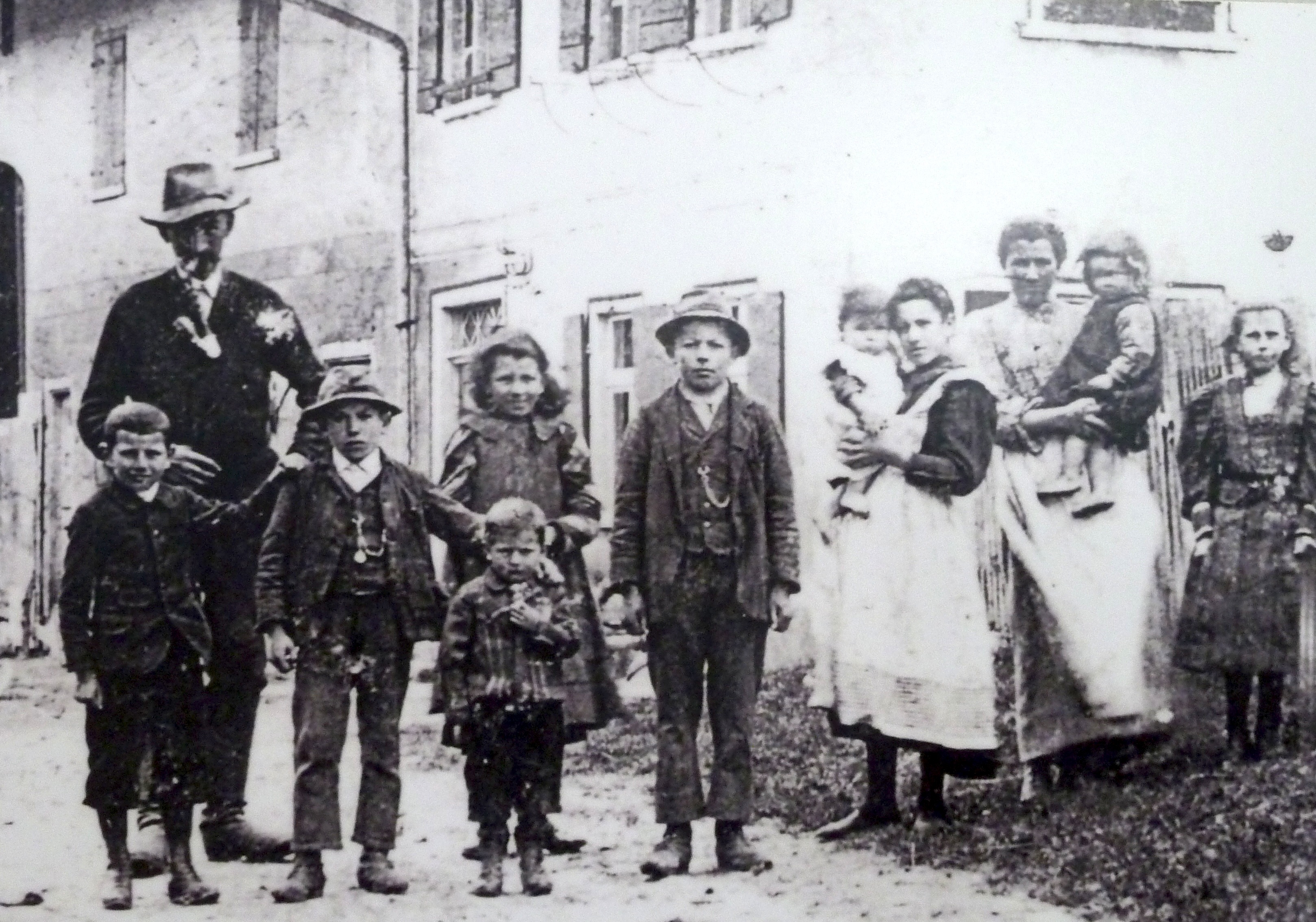Swabian children on:
[Wikipedia]
[Google]
[Amazon]
 The
The
Swabia
Swabia ; german: Schwaben , colloquially ''Schwabenland'' or ''Ländle''; archaic English also Suabia or Svebia is a cultural, historic and linguistic region in southwestern Germany.
The name is ultimately derived from the medieval Duchy of ...
n children (German: ''Schwabenkinder'') were peasant children from poor families in the Alps
The Alps () ; german: Alpen ; it, Alpi ; rm, Alps ; sl, Alpe . are the highest and most extensive mountain range system that lies entirely in Europe, stretching approximately across seven Alpine countries (from west to east): France, Sw ...
of Austria and Switzerland who went to find work on farms in Upper Swabia
Upper Swabia (german: Oberschwaben or ) is a region in Germany in the federal states of Baden-Württemberg and Bavaria.''Brockhaus Enzyklopädie.'' 19. Auflage. Band 16, 1991, p. 72. The name refers to the area between the Swa ...
and the Swabian Jura
The Swabian Jura (german: Schwäbische Alb , more rarely ), sometimes also named Swabian Alps in English, is a mountain range in Baden-Württemberg, Germany, extending from southwest to northeast and in width. It is named after the region of ...
. Usually they were sent by their parents to become seasonal workers. They were taken in spring and brought to the child markets in Germany, mainly in Upper Swabia
Upper Swabia (german: Oberschwaben or ) is a region in Germany in the federal states of Baden-Württemberg and Bavaria.''Brockhaus Enzyklopädie.'' 19. Auflage. Band 16, 1991, p. 72. The name refers to the area between the Swa ...
, where they would be purchased or "rented" by farmers for the season. This use of children as workers was most widespread in the 19th century.
The march over the Alps to Germany proved often difficult and exhausting. Usually their guide was a priest, who was also responsible for ensuring the children had a warm stable to sleep in.
The marches were large, organised groups of several thousand children, taken over the snow-covered mountains often still dressed in rags. It was not uncommon for five and six-year-old children to be taken.
The American press began a campaign in 1908 exposing the Swabian children, describing the child market in Friedrichshafen
Friedrichshafen ( or ; Low Alemannic: ''Hafe'' or ''Fridrichshafe'') is a city on the northern shoreline of Lake Constance (the ''Bodensee'') in Southern Germany, near the borders of both Switzerland and Austria. It is the district capital (''K ...
as a "barely concealed slave market".
The child markets were abolished in 1915, yet the trade of children did not end completely until compulsory schooling for foreign children was introduced in Württemberg
Württemberg ( ; ) is a historical German territory roughly corresponding to the cultural and linguistic region of Swabia. The main town of the region is Stuttgart.
Together with Baden and Hohenzollern, two other historical territories, Württ ...
in 1921.
Many immigration certificates from Swabia show surnames typical of Tyrol
Tyrol (; historically the Tyrole; de-AT, Tirol ; it, Tirolo) is a historical region in the Alps - in Northern Italy and western Austria. The area was historically the core of the County of Tyrol, part of the Holy Roman Empire, Austrian Emp ...
and other regions the children were taken from (e.g. ''Braxmeier'' from ''Braxmarer'').
Film
* ', TV film (first aired 2003), director:Jo Baier
Jo Baier (born 13 February 1949) is a German film director and writer. He directed more than twenty films since 1982 and is known for ''Operation Valkyrie'' (2004), ''Henri 4'' (2010) and ' (2006). He is married to Gertrud Baier.
Early life and ...
, actors: Tobias Moretti, Vadim Glowna
Vadim Glowna (; 26 September 1941 – 24 January 2012) was a German actor and film director. Since 1964 he appeared in more than 150 films and television shows.
He directed the 1983 film ''Dies rigorose Leben'', which won an Honourable Ment ...
The movie is based on the novel "Die Schwabenkinder – Die Geschichte des Kaspanaze" (''"The Swabian Children – The Story of Kaspanaze"'') by ().
Film synopsis: After his mother is killed in an avalanche, the farmer boy Kaspar is sent by his struggling father to work in Swabia. Together with other children from the village, their guide ( Tobias Moretti) brings the group to the child market at Ravensburg
Ravensburg ( Swabian: ''Raveschburg'') is a city in Upper Swabia in Southern Germany, capital of the district of Ravensburg, Baden-Württemberg.
Ravensburg was first mentioned in 1088. In the Middle Ages, it was an Imperial Free City and an imp ...
. There the miraculous story begins: The brutal treatment of the boy by the farmer, his escape, emigration to the United States, and final home coming to his village many years later to visit his dying father.
{{Authority control
Migrant workers
Child labour
History of Swabia
Upper Swabia